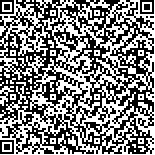| 摘要: |
|
| 关键词: |
| DOI: |
| Received:October 13, 2010Revised:October 13, 2010 |
| 基金项目:This work was supported by the National Basic Research Program of China (973 Program) (No. 2010CB731800), the Key Project of National Nature |
|
| Sensor selection for received signal strength-based source localization in wireless sensor networks |
| Bin ZHAO,Xinping GUAN,Lihua XIE,Wendong XIAO |
| (Key Laboratory of Industrial Computer Control Engineering of Hebei Province, Institute of Electrical Engineering, Yanshan University; School of Electrical and Electronic Engineering, Nanyang Technological University;Key Laboratory of Industrial Computer Control Engineering of Hebei Province, Institute of Electrical Engineering, Yanshan University; School of Electronics, Information and Electrical, Shanghai Jiao Tong University;Institute for Infocomm Research) |
| Abstract: |
| Generally, localization is a nonlinear problem, while linearization is used to simplify this problem. Reasonable approximations could be achieved when signal-to-noise ratio (SNR) is large enough. Energy is a critical resource in wireless sensor networks, and system lifetime needs to be prolonged through the use of energy efficient strategies during system operation. In this paper, a closed-form solution for received signal strength (RSS)-based source localization in wireless sensor network (WSN) is obtained. A sensor selection method is proposed to improve the localization accuracy as well as to save energy consumption. By selecting only a limited number of sensor nodes based on the model accuracy and geometry structure analysis, localization performance is improved, and energy consumption is reduced. In addition, extensive simulations are presented to demonstrate that the estimation performance with the proposed sensor selection method is better than that without sensor selection. |
| Key words: Received signal strength Source localization Closed-form solution Sensor selection Geometry structure |

